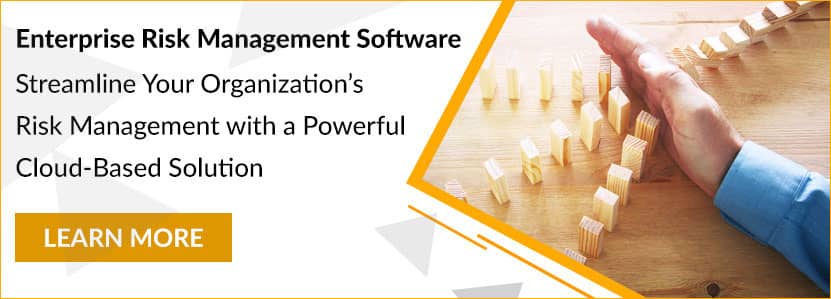Home/ Blog / Getting Insights from Risk Reports
Risk reports should assist management in identifying errors and correcting courses before it is too late. This demands improved risk reports that contain more accurate data and information. These reports are a critical component of any good risk management system, that is why bankers are increasingly concentrating their efforts on their enhancement.
A two-pronged strategy is required to improve risk reports. Businesses must enhance their risk-to-action-item mapping, as well as their workers’ ability to cooperate on risk detection and reporting.

Enhancing The Framework for Risk Reporting
The majority of risk management tools and methods are restricted to risk departments, and risk managers ultimately bear responsibility for the risks. This strategy is ineffective because businesses require all workers to take ownership of the risks involved with their business operations.
Each business process inside an organization entails some level of risk. While it is hard for the risk department to keep a pulse on risks across all business processes, it is simple to teach and encourage every employee to manage and report hazards they encounter.
Better risk reporting is not just a question of dedication by the employees of the organization. The organization needs to have the business processes and an organizational risk culture that fosters risk ownership. Instead of simply asking employees to be more vigilant, risk teams should look at the bigger picture and try to understand why risk reporting is an inefficient process.
The frequent impediments to efficient risk reporting in organizations include:
- Bureaucracy
- Silos between departments and technologies
- Inadequate Collaboration Tools
Bureaucracy
The communication breakdown caused by bureaucracy results in the non-detection of several hazards. Management must ensure that if an employee expresses worry about risk, they are allowed to initiate a discussion about it. The conventional paradigm, in which they inform only their manager, who then selects who to inform, adds needless delays to the entire process. Additionally, it generates negative feedback – no one wants to be regarded as a ‘troublemaker,’ so individuals do not insist on danger reports or news being elevated to an acceptable level.
Centralized risk management platforms completely eliminate the silos that exist in organizations. Since all risk information is now on the same platform, each department has access to the same risk information. Share on XRisk ownership is a successful strategy against such a culture. When everyone’s risk ownership is explicitly outlined and they are made responsible for reporting on those risks, the person reporting the risk will no longer have to worry about bureaucracy. Instead of them having to take initiative to report issues, such reporting will now be their responsibility. Such policies can help foster better risk cultures in organizations.
Silos Within Departments
Another significant impediment to risk reporting is a lack of communication among departments. This issue is inextricably linked to bureaucracy. Numerous companies discourage cross-departmental collaboration. Inter-departmental communication is often handled by the departments’ supervisors. This is extremely troublesome since various departments frequently have conflicting information on the same risks. While the organization possesses the necessary intelligence, the pieces of the jigsaw never fit together because the departments do not interact with one another.
Centralized risk management platforms completely eliminate the silos that exist in organizations. Since all risk information is now on the same platform, each department has access to the same risk information. This ensures that all the risk stakeholders are on the same page and clearly understand the needs of other departments.
Tools for Collaboration Are Scarce
The absence of collaboration tools exacerbates the division between personnel. The majority of companies communicate via email. While emails are excellent for basic communication and delivering specifics, they are hopeless at monitoring and resolving issues. If a firm is serious about enhancing risk reporting, it must ensure that there is a collaboration solution in place that enables diverse individuals to collaborate and work on issues.
Mapping of Risks
Risk mapping is an incredible tool that enables organizations to swiftly analyze risks and implement necessary adjustments. Risk mapping is used at a basic level in the majority of organizations. New risk management systems generate digital risk maps that may be used to detect risk-related issues automatically.
The previous generation of risk management platforms mostly monitored risks. The current generation of risk management platforms goes a step further and uses risk maps to greatly enhance risk reports. The risk management platform has a digital risk map and thus understands the relationships between risks and business processes. When a risk changes, the changes are automatically showed to all the stakeholders involved in the processes affected by the risk.
This allows businesses to exponentially increase the speed at which risk issues are both detected and understood. Interested in seeing how your organization can re-engineer its risk reporting culture to get more insights and accuracy in risk reporting? Get in touch with our risk experts to see a demo of how Predict360 can help your organization.
Request a Demo
Complete the form below and our business team will be in touch to schedule a product demo.
By clicking ‘SUBMIT’ you agree to our Privacy Policy.




